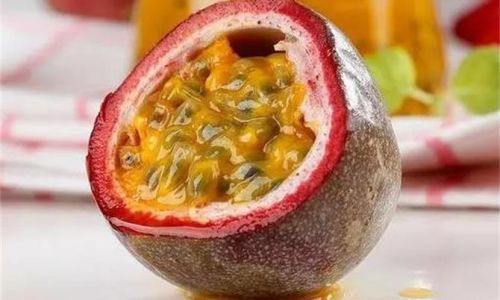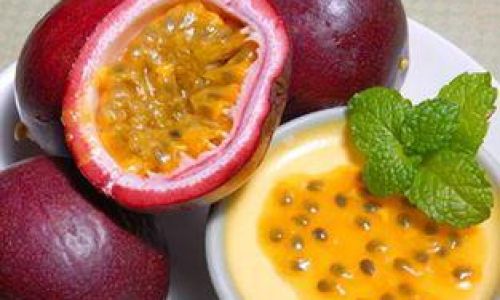Passion fruit, with its vibrant purple or yellow exteriors and tangy, aromatic pulp, is a tropical treasure loved globally for its unique flavor and versatile culinary applications. Whether enjoyed fresh, blended into juices, or used as a garnish for desserts, this exotic fruit has carved a niche in kitchens worldwide. However, like many perishable produce items, passion fruit has a limited shelf life, prompting home cooks and food enthusiasts to seek effective preservation methods. One question that frequently arises is: Can passion fruit be frozen? This article delves into the science, techniques, and practical considerations of freezing passion fruit, exploring how this method affects its texture, flavor, and nutritional value.

Understanding Passion Fruit: A Brief Overview
Before diving into preservation methods, it’s essential to grasp the basics of passion fruit. Native to South America, passion fruit (Passiflora edulis) thrives in tropical and subtropical climates. Its thick, waxy rind encases a jelly-like pulp filled with crunchy, edible seeds. The fruit’s flavor profile is a harmonious blend of sweetness and tartness, often described as a cross between guava, pineapple, and citrus.
Passion fruit is not only a culinary delight but also a nutritional powerhouse. Rich in vitamins A and C, dietary fiber, and antioxidants like beta-carotene and flavonoids, it offers health benefits ranging from immune support to improved digestion. However, these attributes make proper storage crucial to retain its qualities over time.
The Challenge of Preserving Passion Fruit
Fresh passion fruit has a relatively short lifespan. At room temperature, it ripens quickly, softening within a few days. Refrigeration can extend its shelf life to about two weeks, but even then, the fruit’s quality gradually declines. This brevity poses a problem for those who wish to enjoy passion fruit year-round or in regions where it’s not readily available.
Freezing emerges as a potential solution, but concerns linger about its impact on the fruit’s texture and flavor. Will freezing make the pulp mushy? Will the vibrant taste diminish? These questions warrant a detailed exploration.
The Science Behind Freezing Fruits
Freezing is a time-tested method for preserving food by inhibiting microbial growth and slowing enzymatic reactions. When fruits are frozen, the water within their cells forms ice crystals. The size and distribution of these crystals determine the fruit’s texture post-thawing. Rapid freezing, which creates smaller ice crystals, minimizes cellular damage, preserving the fruit’s structure. Slow freezing, on the other hand, results in larger crystals that rupture cell walls, leading to a softer, mushier texture upon thawing.
For passion fruit, which has a high water content (approximately 73%), the freezing process requires careful consideration to maintain its desirable qualities.
Can You Freeze Passion Fruit Whole?
The simplest approach to freezing passion fruit is to store it whole. However, this method has limitations. The thick rind of passion fruit acts as a protective barrier, but freezing can still alter the fruit’s texture. Here’s a step-by-step guide:
- Selection: Choose ripe, unblemished fruits. Avoid those with wrinkled skin or mold, as these may indicate spoilage.
- Washing: Gently rinse the fruit under cool water to remove dirt or pesticides. Pat dry with a clean towel.
- Packaging: Place whole passion fruits in airtight freezer bags or containers. Remove excess air to prevent freezer burn.
- Freezing: Label the bags with the date and freeze horizontally to save space.
Pros:
- Retains the fruit’s integrity.
- Easy and quick to prepare.
Cons:
- Thawing may result in a softer rind and pulp.
- Limited uses post-thawing (e.g., not ideal for slicing or garnishing).
Freezing Passion Fruit Pulp: A Better Alternative
Freezing the pulp separately offers greater flexibility and preserves the fruit’s culinary versatility. Here’s how:
-
Preparation:
- Slice the passion fruit in half.
- Scoop out the pulp and seeds using a spoon.
- Strain the pulp through a fine-mesh sieve to remove seeds (optional, depending on preference).
-
Packaging:
- Pour the pulp into ice cube trays or freezer-safe containers.
- Leave ½ inch of headspace to allow for expansion during freezing.
- Cover with plastic wrap or airtight lids.
-
Freezing:
- Transfer the trays to the freezer until the pulp is solid (4–6 hours).
- Pop the cubes into freezer bags for long-term storage.
Pros:
- Pulp remains usable in smoothies, sauces, and desserts.
- Easy portion control.
- Retains flavor and nutritional value.
Cons:
- Requires more preparation time.
- Seeds may become softer post-thawing.
The Impact of Freezing on Passion Fruit’s Texture and Flavor
Freezing inevitably alters the texture of passion fruit. The pulp becomes slightly softer and more liquid-like upon thawing, making it less suitable for applications requiring firmness, such as garnishes or fresh salads. However, this texture change is often negligible in cooked or blended dishes like juices, jams, and baked goods.
Flavor-wise, freezing preserves the tangy-sweet profile of passion fruit, though some subtle nuances may diminish over time. Proper packaging and rapid freezing mitigate flavor loss, ensuring the pulp remains vibrant and aromatic.
Nutritional Retention: Does Freezing Affect Vitamins and Antioxidants?
Freezing is one of the best preservation methods for retaining nutrients. Studies show that frozen fruits like passion fruit retain most of their vitamins and antioxidants, as the process halts enzymatic degradation. However, prolonged storage (beyond 12 months) may lead to gradual nutrient loss.

Key nutrients in passion fruit, such as vitamin C and beta-carotene, are relatively stable during freezing. The seeds, rich in fiber and healthy fats, also retain their benefits.
How Long Can Passion Fruit Be Frozen?
Properly frozen passion fruit pulp can last 8–12 months without significant quality loss. Whole fruits have a slightly shorter shelf life (6–8 months) due to potential rind deterioration. For optimal results:
- Use vacuum-sealed bags to minimize air exposure.
- Store at a consistent temperature of 0°F (-18°C) or lower.
- Avoid thawing and refreezing, as this accelerates texture breakdown.
Thawing Techniques: Maximizing Quality
Thawing passion fruit correctly is crucial to preserve its qualities. Here are three methods:
-
Refrigerator Thawing:
- Transfer frozen pulp or whole fruit to the fridge 6–8 hours before use.
- Ideal for recipes requiring gradual melting (e.g., sauces).
-
Cold Water Thawing:
- Seal the fruit in a waterproof bag and submerge in cold water.
- Change the water every 30 minutes until thawed.
- Suitable for quicker thawing (1–2 hours).
-
Microwave Thawing:
- Use the defrost setting in short bursts.
- Avoid overheating, which can cook the pulp.
Note: Thawed passion fruit is best used in cooked or blended dishes, as the texture may not resemble fresh fruit.
Creative Uses for Frozen Passion Fruit
Frozen passion fruit pulp opens up a world of culinary possibilities:
- Smoothies and Juices: Blend frozen cubes with bananas, mangoes, or yogurt for a refreshing drink.
- Desserts: Swirl pulp into cheesecakes, ice creams, or sorbets for a tropical twist.
- Sauces and Dressings: Drizzle thawed pulp over pancakes, waffles, or salads.
- Cocktails: Mix with rum, vodka, or prosecco for vibrant beverages.
- Jams and Jellies: Simmer pulp with sugar and pectin for homemade preserves.
Comparing Freezing to Other Preservation Methods
While freezing is effective, it’s not the only way to preserve passion fruit. Here’s how it stacks up against alternatives:
-
Refrigeration:
- Pros: Maintains freshness for 10–14 days.
- Cons: Limited shelf life; texture softens quickly.
-
Dehydration:
- Pros: Concentrates flavor; extends shelf life to 6–12 months.
- Cons: Alters texture drastically; requires specialized equipment.
-
Canning:
- Pros: Preserves pulp in syrup for long-term storage.
- Cons: Time-consuming; may affect nutritional content.
-
Juicing and Freezing:
- Pros: Retains flavor and nutrients; versatile for recipes.
- Cons: Requires additional steps (straining, portioning).
Troubleshooting Common Issues
- Mushy Texture: Avoid over-thawing; use frozen pulp directly in blended recipes.
- Freezer Burn: Ensure airtight packaging and remove excess air.
- Bitter Aftertaste: Overripe fruit may develop bitterness; freeze only ripe specimens.
- Seed Separation: Strain pulp before freezing if seeds are unwanted.
Expert Tips for Freezing Passion Fruit
- Add Sugar or Honey: Mixing pulp with sweeteners before freezing enhances flavor and acts as a natural preservative.
- Use Lemon Juice: A splash of citrus can prevent browning and brighten the taste.
- Label Clearly: Note the date and contents to avoid confusion.
- Experiment with Flavors: Combine passion fruit pulp with mango, pineapple, or coconut for frozen flavor medleys.
The Environmental and Economic Benefits of Freezing
Freezing passion fruit reduces food waste by extending its usability. For home gardeners or those with access to seasonal surpluses, freezing allows year-round enjoyment without relying on imported produce. Additionally, it minimizes the carbon footprint associated with frequent grocery trips.
Conclusion: Embracing the Freezer as a Culinary Ally
Freezing passion fruit is not just feasible—it’s a game-changer for enthusiasts seeking to savor this tropical gem beyond its seasonal availability. While the process alters texture slightly, the flavor and nutritional benefits remain largely intact, making frozen passion fruit a versatile ingredient in countless recipes.
By mastering the art of freezing—whether whole or as pulp—you unlock the ability to enjoy passion fruit’s zesty charm in smoothies, desserts, and beverages anytime. With proper techniques and a touch of creativity, the freezer becomes your gateway to preserving a slice of tropical paradise.
So, the next time you spot a bumper crop of passion fruit, don’t hesitate to stock up. Freeze it, and let the vibrant flavors of summer linger in your kitchen, no matter the season.






0 comments